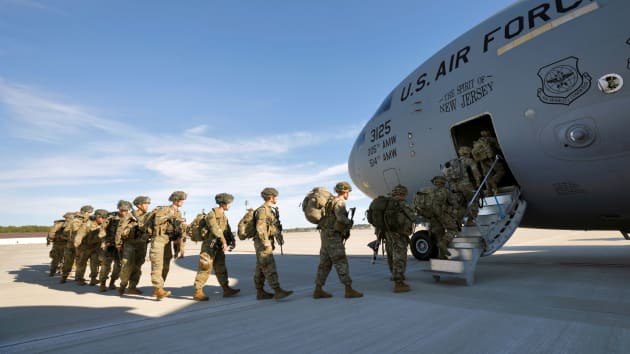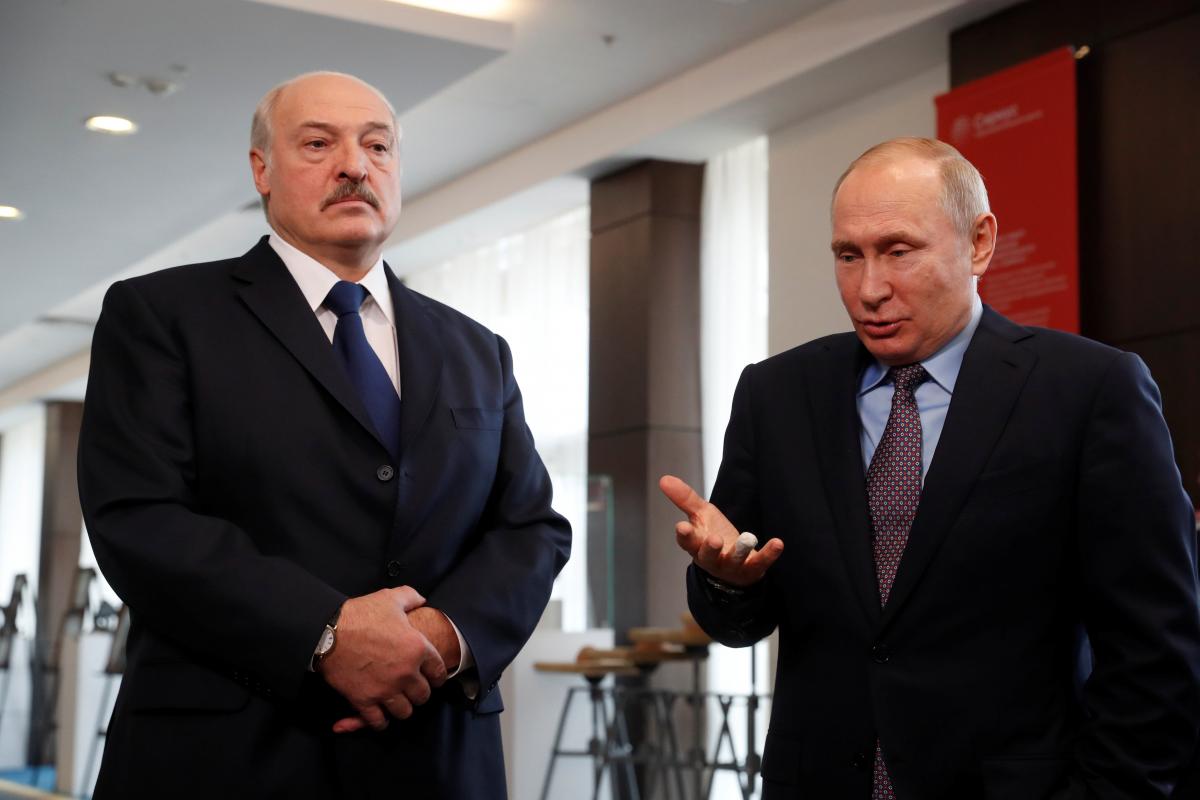Statele Unite ale Americii intenţionează să retragă 11.900 de militari din Germania şi să-i repoziţioneze în alte ţări, a anunţat miercuri secretarul american al apărării, Mark Esper, informează AFP şi dpa.
Aproape 5.600 de membri ai acestui personal militar vor fi repoziţionaţi în alte ţări membre NATO, în timp ce 6.400 se vor întoarce în SUA, mulţi urmând să fie desfăşuraţi prin rotaţie în Europa, a spus Esper într-o conferinţă de presă la Washington.
Cei retraşi vor fi în mare parte mutaţi în Belgia şi Italia, dar Washingtonul are în vedere repoziţionarea unor trupe şi în Polonia şi statele baltice, dacă se ajunge la un acord cu aceste ţări cu privire la statutul lor, a precizat şeful Pentagonului, conform AFP. Reuters scrie că armata SUA îşi va muta cartierul general din Stuttgart în Belgia.
Mutarea este făcută “într-o manieră care va întări NATO, va intensifica descurajarea Rusiei, “îi va reasigura pe aliaţi” şi va “îmbunătăţiţi flexibilitatea strategică a SUA”, a spus Esper, citat de agenţia de presă germană.
Preşedintele american Donald Trump a anunţat în iunie planuri privind o retragere parţială a personalului militar american din Germania, pe fondul unei dispute de lungă durată cu Berlinul privind cheltuielile de apărare.
În Germania vor rămâne 24.000 de militari americani din 36.000 în prezent, scrie Agerpres.
Coordonatorul guvernului german pentru relaţiile transatlantice, Peter Beyer, a afirmat într-o declaraţie făcută miercuri DPA că speră ca planul preşedintelui SUA, Donald Trump, de a retrage trupe americane din Germania să eşueze.
Planul, care vizează o reducere a contingentului de trupe americane din Germania de la aproape 35.000 la 25.000, “nu este în interesul securităţii Germaniei sau al NATO şi de asemenea nu are sens din punct de vedere geopolitic pentru SUA”, a apreciat înaltul responsabil german.
Declaraţia lui Beyer intervine înaintea anunţului pe care ministrul apărării american Mark Esper se aşteaptă să-l facă miercuri cu privire la acest plan al Washingtonului.
“Sunt mulţi oponenţi la Washington, nu doar printre democraţi, ci şi în rândul republicanilor şi la Pentagon. Este încă posibil ca acest plan să eşueze”, a afirmat Beyer.
Trump a anunţat reducerea efectivelor americane din Germania după mai mulţi ani în care a criticat Berlinul pentru nerespectarea obiectivului de cheltuieli privind apărarea în cadrul NATO, de 2% din Produsul Intern Brut (PIB).
O parte din trupele americane care vor fi retrase din Germania urmează să fie relocate în Polonia, dar o cifră exactă nu a fost făcută publică.
Anunţul iniţial a surprins guvernul german. Beyer a spus că autorităţile germane au aflat despre aceasta din presă şi au aşteptat o săptămână pentru a primi mai multe informaţii, “ceea ce nu ar mai trebui să se întâmple în buna şi vitala prietenie dintre SUA şi Germania”.
Cele două ţări sunt în prezent în discuţii cu privire la această problemă.
SUA îşi menţin principala lor bază aeriană pentru Europa şi Africa la Ramstein, în sud-vestul Germaniei. Baza serveşte, de asemenea, ca avanpost major pentru forţele americane din Afganistan şi întregul Orient Mijlociu.
U.S. European Command Force Posture Policy Press Conference: Secretary Esper’s Opening Statement (as prepared)
Good morning everyone, and thank you for joining us today. Since being sworn into office more than a year ago, I have been consistent in stating that my top priority would be implementing the National Defense Strategy. Over the past year, we have done just that.
If you look at my recent message to the joint force regarding the progress we’ve made, you’ll see very clearly how far we have moved on our three lines of effort, which include the first line of effort: build a more lethal force; and the second line of effort: strengthen alliances, as well as our 10 subordinate goals.
One important initiative to advance the NDS has been to conduct a review of all the Combatant Commands to ensure a focus on NDS priorities. This includes optimizing our force presence worldwide; directing our time, money, and manpower toward our highest priorities; implementing our Immediate Response Force, Contingency Response Force, and Dynamic Force Employment enhanced readiness concepts; and, moving toward greater use of rotational forces from the United States to enhance our strategic flexibility and operational unpredictability, as we’ve done over the past few months with our Bomber Task Forces. We are pursuing several other initiatives under this rubric as well.
There are currently more than a half dozen Combatant Command reviews underway, beginning with U.S. Africa Command, and the most recent being U.S. Space Command. Today, we want to update you on the status of our U.S. European Command review, which was accelerated with the President’s decision in early June to reduce our footprint in Germany, and our plans to reposition our forces in Europe to be better situated for Great Power Competition.
It is important to note that in NATO’s 71-year history, the size, composition, and disposition of U.S. forces in Europe has changed many times. Sometimes this has been a result of changes in the threat, sometimes because of other changes in the international environment, and sometimes simply because the borders between NATO countries and Russia have shifted as new Allies have joined. As we’ve entered a new era of Great Power Competition, we are now at another one of those inflection points in NATO’s evolution, and I am confident the Alliance will be all the better and stronger for it.
Since June, EUCOM has done excellent work in developing a plan that achieves the President’s objective, and meets the following five principles that I gave General Wolters as he and his staff began their planning:
1. Enhance deterrence of Russia
2. Strengthen NATO
3. Reassure allies
4. Improve U.S. strategic flexibility and EUCOM operational flexibility
5. Take care of our Service members and their families in the process.
The President approved the EUCOM plan in late June; we briefed key members of Congress last week; and the team and I spoke with NATO Secretary General Stoltenberg and directly affected Allies over the past few days. As we share the plan with you, note that this plan is subject to – and likely will – change to some degree, as it evolves over time.
PAUSE
The current EUCOM plan will reposition approximately 11,900 military personnel from Germany – from roughly 36,000 down to 24,000 – in a manner that will strengthen NATO, enhance the deterrence of Russia, and meet the other principles I set forth.
Of the 11,900, nearly 5,600 Service members will be repositioned within NATO countries, and approximately 6,400 will return to the United States, though many of these or similar units will begin conducting rotational deployments back to Europe. The broad strokes of these moves are as follows:
Various U.S. headquarters will be consolidated in locations in Europe outside of Germany, including, in some cases, collocating at the same locations as their NATO counterparts in Belgium and Italy. This will strengthen NATO and improve the operational efficiency and readiness of over 2,000 Service members.
The nearly 4,500 members of the 2nd Cavalry Regiment will return to the United States, as other Stryker units begin continuous rotations farther east in the Black Sea region to enhance deterrence and reassure allies along NATO’s southeastern flank.
The 2,500 airmen based in Mildenhall, United Kingdom, who are responsible for aerial refueling and special operations, and who had been scheduled to re-base to Germany, will remain in the U.K., thus ensuring the uninterrupted readiness and responsiveness of these units.
A fighter squadron and elements of a fighter wing will be repositioned to Italy, moving them closer to the Black Sea region and better capable of conducting dynamic force employments and rotational deployments to NATO’s southeastern flank.
In addition to these moves and the rotational forces announced by President Trump and Polish President Duda in 2019, we also plan on rotating forward the lead element of the Army’s newly established V Corps headquarters to Poland, once Warsaw agrees to a Defense Cooperation Agreement and burden sharing details, as previously pledged.
Our aim is to implement these moves as expeditiously as possible, consistent with the principles I set forth from the beginning, particularly being fair to and taking care of our Service members and their families. We could see some moves begin within weeks; others will take longer.
PAUSE
As anyone can see, the repositioning of our forces in Europe constitutes a major strategic and positive shift, wholly in line with the NDS, and consistent with other adjustments the U.S. has made within NATO in previous times.
These changes will unquestionably achieve the core principles of enhancing U.S. and NATO deterrence of Russia; strengthening NATO; reassuring Allies; and, improving U.S. strategic flexibility and EUCOM operational flexibility.
And, of course, at all times, we will prioritize our most important resource: our Service members and their families. No moves will take place without thorough communication with our people, continued engagement with Congress, and consultation with our Allies.
Thank you, and I will now turn it over to the Vice Chairman of the Joint Chiefs of Staff General Hyten, and EUCOM Commander General Wolters, who will cover these moves in more detail.
Pozitia Secretarului General al NATO Jens Stoltenberg exprimata in Iunie :





